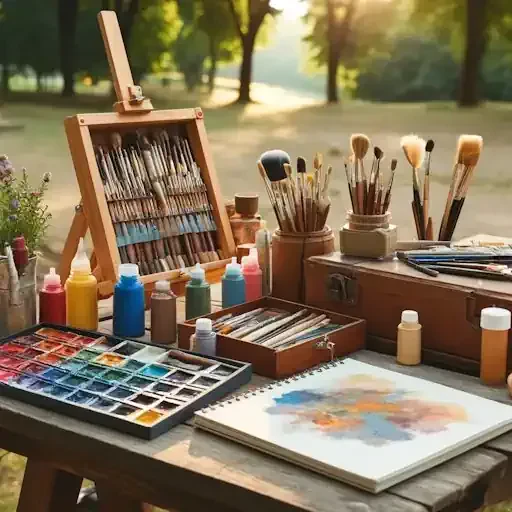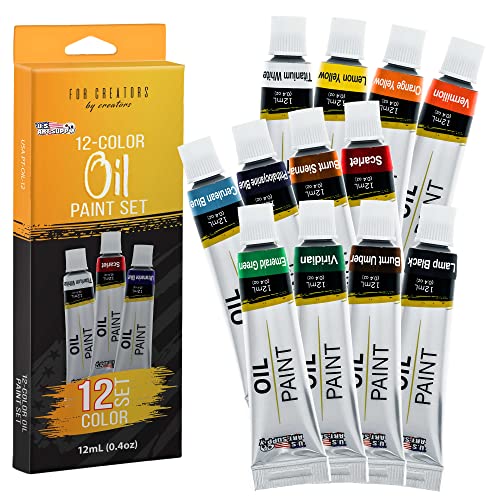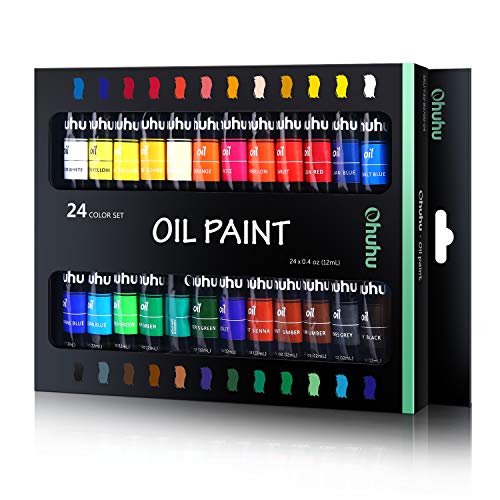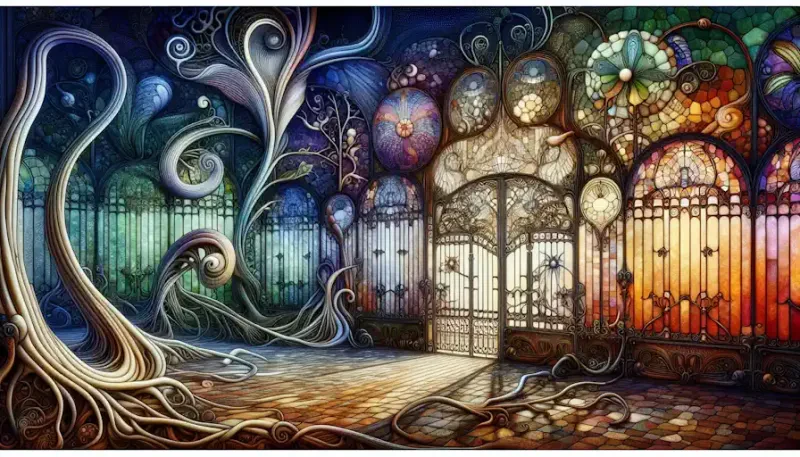Introduction: Unveiling the Painter's Essential Arsenal
Embarking on a painting journey, whether as a novice enthusiast or a seasoned professional, requires more than just a creative spirit. It demands a carefully curated collection of tools – a painter's toolkit – that empowers your artistic vision and brings your imagination to life on the canvas. In this comprehensive guide, we'll go into the top 10 art supplies that are indispensable for any painter, regardless of their skill level or preferred medium.
Why the Right Tools Matter for Artistic Expression
The significance of having the right tools at your disposal cannot be overstated. Imagine a sculptor without chisels or a musician without instruments; similarly, a painter without the essential supplies is limited in their ability to express themselves fully. The right brush can make the difference between a precise line and a messy blob, while the perfect canvas can elevate a simple sketch into a masterpiece. Investing in quality art supplies not only enhances your technique but also unlocks new possibilities for creativity.
Beyond Brushes: The Unsung Heroes of Your Toolkit
While brushes often steal the spotlight, a painter's toolkit encompasses a wider array of tools, each playing a crucial role in the artistic process. From palettes that hold your vibrant hues to easels that support your canvas, these unsung heroes often go unnoticed but are essential for a seamless and enjoyable painting experience. We'll explore each of these tools in detail, shedding light on their functions and how they contribute to your artistic endeavors.
A Guide for Beginners and Seasoned Artists Alike
Whether you're just starting your artistic journey or you've been painting for years, this guide is designed to cater to all levels of expertise. We'll provide insights into the different types of art supplies available, their specific uses, and how to choose the right ones for your individual needs and preferences. By the end of this article, you'll have a comprehensive understanding of the essential tools that make up a painter's toolkit, empowering you to create art that is truly your own.
Brushes: The Backbone of Your Art
In the hands of a skilled painter, brushes become extensions of their creativity, allowing them to translate their imagination onto the canvas with finesse and precision. A well-rounded collection of brushes is essential for any painter's toolkit, as each type serves a distinct purpose and contributes to the overall aesthetic of your artwork. Let's explore the different types of brushes and their unique characteristics:
Flat Brushes: These versatile brushes boast a square or rectangular shape with long, flexible bristles. Their broad surface area makes them ideal for covering large areas quickly and evenly, while their thin edges can be used for creating sharp lines and details. Flat brushes are particularly well-suited for acrylic and oil painting.
Round Brushes: With their rounded tips and pointed bristles, round brushes are the go-to choice for detail work, fine lines, and delicate strokes. They come in various sizes, from tiny brushes for miniature painting to larger ones for broader strokes. Round brushes are a must-have for any painter working with intricate details or realistic subjects.
Filbert Brushes: Combining the characteristics of flat and round brushes, filbert brushes offer the best of both worlds. Their flat, oval-shaped bristles allow for both broad strokes and fine details, making them versatile tools for blending, shading, and creating soft transitions between colors.
Bright Brushes: Featuring short, stiff bristles, bright brushes are designed for bold, textured marks and impasto techniques. Their stiffness allows for greater control and the ability to create thick, expressive strokes that add dimension and depth to your artwork.
Fan Brushes: These unique brushes resemble a fan, with bristles that spread out in a wide, thin shape. They are perfect for creating textured effects, blending colors, and applying glazes. Fan brushes are also commonly used for painting foliage, hair, and other organic forms.
Choosing the Right Brush for Your Medium: The type of paint you use will influence your brush selection. Acrylic and oil paints typically require stiffer brushes, while watercolor paints call for softer, more absorbent bristles. Experimenting with different brushes and mediums will help you discover your personal preferences and find the tools that best suit your artistic style.
Paints: Bringing Your Vision to Life
Paints are the lifeblood of your artistic creations, the pigments that transform blank canvases into vibrant expressions of your imagination. The choice of paint is a deeply personal one, as each type offers unique properties and characteristics that influence the final outcome of your artwork. Let's explore some of the most popular paint options available to painters:
Acrylic Paints: Renowned for their versatility and ease of use, acrylic paints have become a staple in many artists' toolkits. They are water-based, which means they dry quickly and can be easily cleaned up with water. Acrylics offer a vast range of colors and finishes, from opaque to translucent, and can be used on various surfaces, including canvas, wood, and paper.
Oil Paints: Revered for their rich, luminous colors and slow drying time, oil paints have been a favorite among artists for centuries. They offer exceptional blending capabilities and allow for subtle gradations of color, making them ideal for achieving realistic textures and depth in your paintings. However, oil paints require solvents for thinning and cleaning, and they can take days or even weeks to fully dry.
Watercolor Paints: Known for their delicate, translucent washes and ethereal quality, watercolor paints are beloved by artists who appreciate their expressive potential. They are water-soluble and can be layered to create complex hues and subtle variations in color. Watercolors are traditionally used on paper, but they can also be applied to other surfaces with proper preparation.
Gouache Paints: Similar to watercolors in their water-soluble nature, gouache paints offer a unique opaque finish. They are versatile and can be used for both detailed work and broad washes, making them a popular choice for illustration, design, and fine art. Gouache dries quickly and can be rewetted and reworked, offering flexibility during the painting process.
Quality vs. Quantity: Investing in Your Palette: While it might be tempting to stock up on a vast array of inexpensive paints, investing in a few high-quality pigments can make a significant difference in your artwork. Professional-grade paints offer superior pigment concentration, lightfastness, and overall performance, resulting in more vibrant, long-lasting colors.
Experimenting with Different Brands and Pigments: The world of paints is vast and diverse, with numerous brands and pigment options to explore. Don't be afraid to experiment with different brands and colors to discover your favorites. Each brand has its unique characteristics, and certain pigments might resonate with your artistic style more than others.
Palettes: Mixing Your Masterpieces
The palette is the painter's playground, a canvas in itself where colors blend and transform into new hues, waiting to be transferred to the main artwork. While often overlooked, the right palette can significantly impact your painting process, providing a smooth surface for mixing colors and allowing you to experiment with different combinations. Let's explore the diverse range of palettes available for painters:
Traditional Wooden Palettes: The classic wooden palette has been a staple in artists' studios for centuries. Its smooth, non-porous surface is ideal for mixing oils and acrylics, as it doesn't absorb the paints and allows for easy blending. Wooden palettes often come with a thumb hole for comfortable handling, making them a practical choice for many painters.
Glass Palettes: Glass palettes offer a sleek and modern alternative to traditional wooden ones. Their non-porous surface ensures easy cleaning and prevents colors from staining. The transparency of glass allows you to see the true colors of your paints, making it easier to achieve accurate mixes. However, glass palettes can be fragile and require careful handling.
Plastic Palettes: Lightweight and durable, plastic palettes are a popular choice for artists on the go. They come in various shapes and sizes, often featuring wells or compartments for holding different colors. Plastic palettes are easy to clean and relatively inexpensive, making them a practical option for beginners and students.
Disposable Palettes: For those who prefer convenience and minimal cleanup, disposable palettes offer a practical solution. These palettes are typically made of wax-coated paper or plastic and can be discarded after use. They are ideal for plein air painting, travel, or situations where cleaning a traditional palette might be inconvenient.
Keeping Your Palette Clean and Organized: Regardless of the type of palette you choose, maintaining its cleanliness is crucial for achieving accurate color mixing. After each painting session, thoroughly clean your palette to prevent colors from drying and mixing unintentionally. Consider using a palette knife to scrape off excess paint and a solvent (for oils or acrylics) or water (for watercolors) to wipe the surface clean.
Surfaces: The Canvas for Your Creativity
The surface you choose for your artwork is more than just a backdrop; it's a fundamental element that can significantly influence the final look and feel of your painting. From traditional stretched canvases to experimental alternatives, the right surface can enhance your technique and elevate your artistic expression. Let's check into the various options available to painters:
Stretched Canvas: The classic choice for many artists, stretched canvas offers a stable and taut surface that is ideal for various painting techniques. It comes in a wide range of sizes and can be primed with gesso to create a smooth, absorbent surface that readily accepts paint. Stretched canvas is suitable for both acrylic and oil paints and is often the preferred choice for professional artists.
Canvas Panels: A more affordable and convenient alternative to stretched canvas, canvas panels consist of canvas fabric glued to a rigid cardboard backing. They are lightweight, easy to store, and require no additional framing. Canvas panels are available in various sizes and are a popular choice for students, beginners, and artists who prefer a portable option.
Canvas Paper: Combining the texture of canvas with the convenience of paper, canvas paper offers a versatile and experimental surface for painting. It is available in pads or sheets and can be used for both wet and dry media. Canvas paper is ideal for sketching, practice, and creating mixed media artwork.
Wood Panels: For a unique texture and added durability, wood panels provide an alternative surface for painting. They offer a smooth or textured surface, depending on the type of wood used, and can be primed with gesso to prepare them for painting. Wood panels are often used for oil and acrylic paintings and can add a rustic or contemporary touch to your artwork.
Priming Your Surface: Regardless of the surface you choose, priming is essential for optimal results. Priming creates a barrier between the surface and the paint, preventing the paint from being absorbed and ensuring even application. Gesso is the most common primer used for canvas and wood panels, while watercolor paper often comes pre-primed.
Easels: Supporting Your Artistic Endeavors
The easel, often an unsung hero in the painter's toolkit, provides the essential support and stability for your canvas, allowing you to work comfortably and maintain optimal viewing angles. Choosing the right easel can significantly impact your painting experience, especially during long hours in the studio or outdoors. Let's explore the different types of easels available and their unique features:
A-Frame Easels: These classic easels are characterized by their triangular A-shaped frame, providing a sturdy base for your canvas. A-frame easels are known for their portability and ease of adjustment, making them a popular choice for both studio work and plein air painting. They typically come with a tilting mast, allowing you to adjust the angle of your canvas for optimal comfort and viewing.
H-Frame Easels: Designed for larger canvases and heavier workloads, H-frame easels offer exceptional stability and strength. Their H-shaped frame provides a wider base and additional support for larger canvases, preventing them from wobbling or tipping over. H-frame easels are often used in studios or for large-scale projects where stability is paramount.
Tabletop Easels: Compact and versatile, tabletop easels are ideal for small canvases or working on a table or desk. They are lightweight and portable, making them convenient for travel or for artists with limited space. Tabletop easels often come with adjustable angles, allowing you to find the perfect position for your artwork.
Choosing the Right Easel for Your Needs: When selecting an easel, consider your typical painting style, the size of your canvases, and whether you prefer working in a studio or outdoors. If portability is a priority, an A-frame or tabletop easel might be the best choice. For larger canvases and studio work, an H-frame easel might be more suitable.
Setting Up Your Easel for Optimal Comfort: Proper easel setup is crucial for ensuring a comfortable and productive painting experience. Position your easel at a height that allows you to work without straining your neck or back. Adjust the angle of your canvas to minimize glare and ensure a clear view of your artwork. A comfortable setup will enable you to focus on your creativity and avoid unnecessary physical discomfort.
Mediums: Enhancing and Transforming Your Paints
Mediums are magical elixirs that unlock the hidden potential of your paints, allowing you to manipulate their properties and achieve a wide range of effects. Whether you work with acrylics, oils, or watercolors, mediums can extend drying times, alter transparency, create texture, and much more. Let's look into the world of mediums and discover how they can revolutionize your painting process:
Acrylic Mediums: The versatility of acrylic paints is further enhanced by a wide array of mediums. Gels thicken the paint and create texture, while pastes add body and dimension. Glazing mediums increase transparency and luminosity, while retarders slow down drying time, allowing for smoother blending and longer working time. Experimenting with different acrylic mediums can open up new avenues for creative expression.
Oil Painting Mediums: Oil painting mediums are essential for controlling the consistency, drying time, and sheen of your paints. Linseed oil is a popular medium for thinning paint and increasing its flow, while turpentine accelerates drying time and facilitates cleaning brushes. Other mediums like stand oil and alkyd mediums offer unique properties that can be tailored to your specific needs.
Watercolor Mediums: Watercolor mediums can modify the behavior of your paints in various ways. Gum arabic, a natural resin, increases the viscosity and brilliance of watercolors, while ox gall improves flow and prevents colors from beading up on the paper. Granulation mediums create interesting textures and patterns, while lifting mediums allow you to remove or lighten areas of paint after it has dried.
Understanding How Mediums Work: Before diving into the world of mediums, it's crucial to understand how they interact with your paints and how they can alter their properties. Each medium has a specific function, and experimenting with them will help you discover their unique effects. It's also important to note that some mediums are compatible with specific types of paint, so always check the manufacturer's instructions before use.
Experimenting to Find Your Favorites: The best way to discover the power of mediums is through experimentation. Try different combinations of paints and mediums to see how they interact and create unique effects. Keep a journal to record your observations and findings, and don't be afraid to step outside your comfort zone and explore new possibilities. The world of mediums is vast and exciting, and it can lead to endless creative discoveries.
Additional Essentials: Rounding Out Your Toolkit
Beyond the core elements of brushes, paints, palettes, surfaces, and easels, a painter's toolkit is incomplete without a few additional essentials that enhance your artistic process and open up new creative possibilities. These tools might not be as glamorous as brushes or as prominent as canvases, but their contributions to your artwork are invaluable. Let's explore these unsung heroes and their diverse applications:
Palette Knives: These flexible, metal blades are not just for mixing paints on your palette. They can be used for applying paint directly to the canvas, creating textured effects, scraping away unwanted layers, and even blending colors. Palette knives offer a unique way to manipulate paint and add a sense of spontaneity and energy to your artwork.
Painting Knives: Similar to palette knives, painting knives have a more rigid blade and are designed for applying thick layers of paint, creating impasto effects, and sculpting textures on the canvas. They are favored by artists who enjoy a bold, expressive style and want to add dimension and depth to their paintings.
Masking Fluid/Tape: These tools are essential for protecting areas of your canvas or paper that you don't want to be painted. Masking fluid is a liquid latex solution that can be applied with a brush and peeled off once the paint is dry. Masking tape is a versatile adhesive tape that can be used to create clean, sharp edges and geometric shapes in your artwork.
Sponges: Sponges offer a unique way to apply and manipulate paint, creating textured effects, blending colors, and adding a sense of organic randomness to your artwork. Natural sea sponges and synthetic sponges are both used for painting, each offering different textures and absorbency levels.
Rags/Paper Towels: Always keep a supply of clean rags or paper towels on hand for wiping brushes, cleaning up spills, and blending colors. They are essential for maintaining a tidy workspace and ensuring that your colors remain pure and uncontaminated.
Containers for Water/Mediums: Having separate containers for water (for watercolors and acrylics) and mediums (for oils and acrylics) is crucial for keeping your workspace organized and your tools clean. Choose containers that are sturdy, easy to clean, and large enough to accommodate your brushes and other tools.
Conclusion: Building Your Personalized Painter's Toolkit
The journey of a painter is one of constant evolution and discovery, and the tools you choose to accompany you on this journey are a reflection of your unique artistic style and preferences. By understanding the essential elements of a painter's toolkit, you can make informed decisions about the supplies that best suit your needs and aspirations.
Remember, building your toolkit is an ongoing process. As you grow as an artist, your preferences and techniques may evolve, leading you to discover new tools and materials that expand your creative horizons. Embrace the journey of exploration and experimentation, and allow your toolkit to evolve alongside your artistic expression.
Investing in quality supplies is an investment in your artistic future. While it might be tempting to opt for cheaper alternatives, high-quality tools will not only enhance your current work but also last longer, saving you money in the long run. Consider your toolkit as a partner in your creative endeavors, a collection of trusted companions that will help you bring your artistic vision to life.
Finally, remember that the most important tool in your arsenal is your passion for painting. With the right tools by your side and a burning desire to create, the possibilities are endless. Embrace the joy of exploring different techniques, experimenting with new materials, and pushing the boundaries of your artistic expression. Your painter's toolkit is a reflection of your unique artistic journey, and it's up to you to fill it with the tools that inspire and empower you to create your best work.
Summary
The article, "Painter's Toolkit: Top 10 Essential Art Supplies for 2024", looks into the indispensable tools that every painter needs to create their masterpieces. It emphasizes that having the right tools is crucial for artistic expression, regardless of skill level.
The article comprehensively covers the following essential art supplies:
Brushes: Discusses various types like flat, round, filbert, bright, and fan brushes, highlighting their specific uses and the importance of choosing the right brush for different mediums.
Paints: Explores the characteristics of acrylics, oils, watercolors, and gouache, emphasizing the significance of quality pigments and experimentation with different brands.
Palettes: Explains the different types of palettes available, from traditional wooden ones to modern glass and plastic options, and the importance of keeping them clean.
Surfaces: Details options like stretched canvas, canvas panels, canvas paper, and wood panels, stressing the need for priming the surface for optimal results.
Easels: Outlines the various types of easels, including A-frame, H-frame, and tabletop, and how to choose the right one based on your painting style and needs.
Mediums: Dives into the world of mediums, explaining how they can transform your paints and achieve a wide range of effects in acrylics, oils, and watercolors.
Additional Essentials: Covers other important tools like palette knives, painting knives, masking fluid/tape, sponges, rags, and containers for water/mediums.
Building a personalized painter's toolkit is an ongoing journey, encouraging artists to invest in quality supplies, experiment with different tools, and prioritize their passion for painting.







